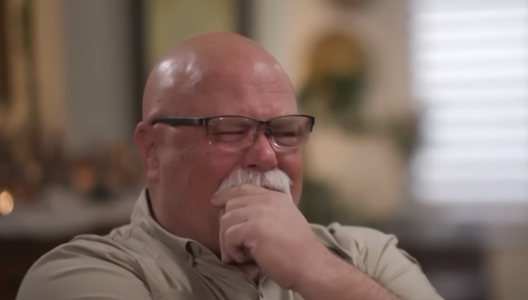Veterans raise alarms over health risks from Nevada’s secretive Area 52
By
Veronica E.
- Replies 0
When most people think of military secrecy in Nevada, Area 51 usually comes to mind.
But just a few miles away lies its lesser-known counterpart—Area 52, officially known as the Tonopah Test Range.
For decades, this desert facility has been the site of nuclear testing, weapons development, and classified aircraft projects.
Now, veterans who served there in the 1980s are speaking out, not about the technology they worked on, but about the illnesses that have followed them into civilian life.
Their stories point to a troubling legacy of contamination, unanswered questions, and a fight for recognition that continues today.

Dave Crete, a 60-year-old Air Force veteran, served at Area 52 during the 1980s.
The base was a hub for missile tests, bomb drops, and stealth aircraft development.
But years after leaving the service, Dave noticed a disturbing pattern: many of his fellow veterans were battling tumors or cancer.
At a reunion barbecue, six out of eight men admitted they had developed tumors, while another’s son was born with one.
For Dave, the odds seemed too high to be explained by coincidence.
Haunted by what he discovered, Dave began researching.
He found declassified reports showing that parts of the Tonopah Test Range were contaminated with plutonium during the 1970s.
While the documents acknowledged the contamination, they downplayed the danger, calling the environmental costs “small and reasonable” compared to national security benefits.
Dave compiled the evidence into presentations for his fellow veterans, who were stunned by the findings.
Despite the documentation, official recognition has remained elusive.
Many of the men who served at Area 52 have died before the age of 70, well below the national average.
The cancers reported among them vary widely, affecting multiple systems of the body.
Dave himself has fought tumors throughout his life.
But because records of their service remain classified, veterans have struggled to prove their exposure and qualify for Veterans Administration benefits.
As Dave puts it, “We’re not asking for the secrets of what we did. We just want the same care as every other veteran.”
Though far less famous than Area 51, Area 52 has played a central role in American military history since 1957.
It hosted nuclear weapons testing and covert training programs, including “Constant Peg,” where US pilots flew captured Soviet MiG fighters.
With a 12,000-foot runway and housing for thousands of workers, the base remains active today.
In 2017, it received upgrades as part of the country’s nuclear modernization efforts, ensuring its continued role in defense.
Yet despite its scale and significance, the Pentagon rarely refers to it by name, maintaining layers of secrecy that extend to those who worked there.
Dave and other veterans have testified before Congress, demanding recognition and support.
They argue that the government’s classification of Area 52 is being used as a shield to block health claims.
Their stories echo those of earlier generations—from atomic test participants in the 1950s to veterans exposed to burn pits in recent conflicts—who struggled to have their sacrifices acknowledged.
For now, requests for comment from the Department of Defense and the Department of Veterans Affairs have been met with silence.
Advocates suggest several steps for those who suspect exposure during service at classified sites:
In the end, what these veterans are asking for isn’t classified secrets—it’s fairness, dignity, and access to the care they’ve earned.
Their fight is a reminder that behind every hidden base and government file are real people whose health and lives are on the line.
By sharing their stories, they’re shining a light on an issue too long kept in the shadows.
And as a community, it’s up to us to listen, support, and keep pressing for the accountability our servicemen and women deserve.
Read next: Big changes for veterans’ families: What the new VA survivor benefits mean for you

The story of Area 52 veterans is a reminder that the cost of service isn’t always visible on the battlefield. As more voices come forward, the call for accountability grows harder to ignore.
Do you think the government should declassify records if it means helping veterans secure the care they need? Share your thoughts in the comments below.
But just a few miles away lies its lesser-known counterpart—Area 52, officially known as the Tonopah Test Range.
For decades, this desert facility has been the site of nuclear testing, weapons development, and classified aircraft projects.
Now, veterans who served there in the 1980s are speaking out, not about the technology they worked on, but about the illnesses that have followed them into civilian life.
Their stories point to a troubling legacy of contamination, unanswered questions, and a fight for recognition that continues today.

Air Force veteran Dave Crete is speaking out about the health crises faced by fellow Area 52 servicemen, calling for recognition and justice. Image Source: YouTube / NewsNation.
Service and sickness
Dave Crete, a 60-year-old Air Force veteran, served at Area 52 during the 1980s.
The base was a hub for missile tests, bomb drops, and stealth aircraft development.
But years after leaving the service, Dave noticed a disturbing pattern: many of his fellow veterans were battling tumors or cancer.
At a reunion barbecue, six out of eight men admitted they had developed tumors, while another’s son was born with one.
For Dave, the odds seemed too high to be explained by coincidence.
Also read: Alfie Wise, veteran actor and Burt Reynolds' frequent costar, dies at 82
Searching for answers
Haunted by what he discovered, Dave began researching.
He found declassified reports showing that parts of the Tonopah Test Range were contaminated with plutonium during the 1970s.
While the documents acknowledged the contamination, they downplayed the danger, calling the environmental costs “small and reasonable” compared to national security benefits.
Dave compiled the evidence into presentations for his fellow veterans, who were stunned by the findings.
Despite the documentation, official recognition has remained elusive.
Also read: Hero’s mission: Veteran who lost his legs in Iraq battles to stop “wounded warriors” tax
Illness without recognition
Many of the men who served at Area 52 have died before the age of 70, well below the national average.
The cancers reported among them vary widely, affecting multiple systems of the body.
Dave himself has fought tumors throughout his life.
But because records of their service remain classified, veterans have struggled to prove their exposure and qualify for Veterans Administration benefits.
As Dave puts it, “We’re not asking for the secrets of what we did. We just want the same care as every other veteran.”
Also read: Protect Your Savings: How a Veteran Lost $40,000 in a Heart-Wrenching Post-Hurricane Scam
A base in the shadows
Though far less famous than Area 51, Area 52 has played a central role in American military history since 1957.
It hosted nuclear weapons testing and covert training programs, including “Constant Peg,” where US pilots flew captured Soviet MiG fighters.
With a 12,000-foot runway and housing for thousands of workers, the base remains active today.
In 2017, it received upgrades as part of the country’s nuclear modernization efforts, ensuring its continued role in defense.
Yet despite its scale and significance, the Pentagon rarely refers to it by name, maintaining layers of secrecy that extend to those who worked there.
Also read: Caregivers of veterans just got three more years of support—here’s what to know
A fight for accountability
Dave and other veterans have testified before Congress, demanding recognition and support.
They argue that the government’s classification of Area 52 is being used as a shield to block health claims.
Their stories echo those of earlier generations—from atomic test participants in the 1950s to veterans exposed to burn pits in recent conflicts—who struggled to have their sacrifices acknowledged.
For now, requests for comment from the Department of Defense and the Department of Veterans Affairs have been met with silence.
Also read: He searched for his Army buddy for 40 years—what he found on the doorstep will stay with you
What veterans can do
Advocates suggest several steps for those who suspect exposure during service at classified sites:
- Document all details — Keep personal records of service history, symptoms, and correspondence.
- Seek advocacy support — Groups like the Veterans of Foreign Wars (VFW) can help navigate complex claims.
- Contact elected officials — Congressional offices may intervene to move cases forward.
- Share your story — Raising awareness puts public pressure on agencies to respond.
In the end, what these veterans are asking for isn’t classified secrets—it’s fairness, dignity, and access to the care they’ve earned.
Their fight is a reminder that behind every hidden base and government file are real people whose health and lives are on the line.
By sharing their stories, they’re shining a light on an issue too long kept in the shadows.
And as a community, it’s up to us to listen, support, and keep pressing for the accountability our servicemen and women deserve.
Read next: Big changes for veterans’ families: What the new VA survivor benefits mean for you
Key Takeaways
- Veterans who served at Area 52 (Tonopah Test Range) in Nevada during the 1980s are reporting high rates of tumors and cancers, raising concerns of plutonium exposure.
- Medical records remain heavily redacted due to classification, leaving affected veterans unable to fully document their cases or access care.
- Declassified environmental assessments from the 1970s confirmed plutonium contamination but prioritized security needs over health risks.
- Former servicemen, led by veteran Dave Crete, are campaigning for recognition, testifying before Congress, and demanding transparency and compensation.
The story of Area 52 veterans is a reminder that the cost of service isn’t always visible on the battlefield. As more voices come forward, the call for accountability grows harder to ignore.
Do you think the government should declassify records if it means helping veterans secure the care they need? Share your thoughts in the comments below.






